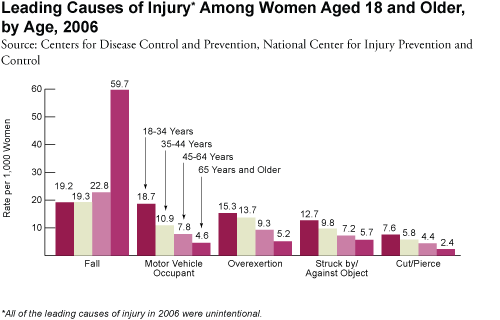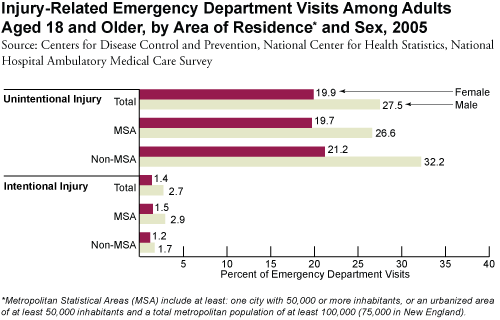Mike Dowd, Editor
Bangor Daily News
Mr. Dowd:
I have received no information back with respect to my earlier email giving you links to the correct information on Child maltreatment and killing. I have, as a result, written my own op-ed piece in 3 of my blogs as shown below.
Feel free to pass this on to Ricci who deserves to be drummed out of his position as a Doctor and a person consulted by Police. He has done untold damage to innocent men and dads with his unforgivable incompetence.
If you google "Mendacity, incompetence, and misandry shows up in Maine again" you will find my article.
Mike Murphy
The following article appeared in the Bangor Maine Daily News Newspaper here and below on March 6, 2010. In it the author, Dawn Gagnon, quotes statistics but one has to doubt their veracity given they have not been fact checked. Further they quote a Dr. Lawrence Ricci of Portland, the state’s only child abuse pediatrician and an expert often consulted by law enforcement officials and others for his 22 years of experience in the field.
Its no wonder dads and men get a raw deal with Police, in the media, and the courts because incompetents like this fellow are considered experts and the media publishes the information as gospel and the Feminists in DV shelters and elsewhere use it as ammunition to vilify men and fathers. It is misandry at its worse.
“That’s certainly the case in Maine, and it’s certainly the case nationally,” Ricci said Friday in a telephone interview.
In Maine and in the United States, the perpetrators of serious physical child abuse or homicide are most likely fathers, next are nonbiological father figures such as stepfathers or mothers’ boyfriends, and then sitters, Ricci said. Mothers are the fourth-most-likely perpetrators and “well down on the list,” he said."
Here's the truth from the most recent National Stats by the Department of Health in Washington, DC from 2007 and the trend is the same over many years going back.
Table 4-5 Perpetrator Relationships to Child Fatalities,
2007 Child Maltreatment 2007
| Relationship to Child | Child Fatalities | |
|---|---|---|
| Number | Percent | |
| PARENT | Blank Cell | |
| Mother | 347 | 27.1 |
| Mother and Other | 96 | 7.5 |
| Father | 208 | 16.3 |
| Father and Other | 11 | 0.9 |
| Mother and Father | 232 | 18.1 |
| NONPARENT | Blank Cell | |
| Daycare Staff | 24 | 1.9 |
| Foster Parent (Female Relative) | 0 | 0.0 |
| Foster Parent (Male Relative) | 0 | 0.0 |
| Foster Parent (Nonrelative) | 3 | 0.2 |
| Foster Parent (Unknown Relationship) | 3 | 0.2 |
| Friend or Neighbor | 2 | 0.2 |
| Legal Guardian (Female) | 0 | 0.0 |
| Legal Guardian (Male) | 0 | 0.0 |
| More than One Nonparental Perpetrator | 52 | 4.1 |
| Other Professional | 2 | 0.2 |
| Partner of Parent (Female) | 4 | 0.3 |
| Partner of Parent (Male) | 35 | 2.7 |
| Relative (Female) | 29 | 2.3 |
| Relative (Male) | 20 | 1.6 |
| Staff Group Home | 2 | 0.2 |
| Unknown or Missing | 210 | 16.4 |
| Total | 1,280 | Blank Cell |
| Percent | Blank Cell | 100.0 |
Perpetrator Relationships to Child Fatalities, 2007
This table first lists perpetrator relationships including mother, mother and father, father, mother and other, father and other, female daycare staff, more than one nonparental perpetrator, unknown, etc. In the next column is listed the number of child fatalities from the specified perpetrator. The third column lists the percentage. More than 27 percent (27.1%) of child fatalities were perpetrated by a mother acting alone.
Moms and another are more than twice as likely to kill a child as a dad and another
Victims by Perpetrator Relationship, 2007
This pie chart presents victims by relationship to their perpetrators. More than 80 percent (80.1%) of victims were maltreated by at least one parent. Nearly 40 percent (38.7%) of victims were maltreated by their mother acting on her own.
Note the rate by mom and other is 44.4% while dad and other is 18.8%. The rate by the mother is 2.36 times higher than dad. That is 236% greater. Now how to explain that away to those who believe only men are abusive.
Re: Column 3/6/10 Most often children die at hands of young men By Dawn Gagnon BDN Staff http://www.bangordailynews.
I read Gagnon's column and was quite surprised at the limited research involved. I would want to make you aware that in the USA and Australia the single mom is the most likely to harm or kill her biological child and this increases with a new boyfriend/partner.
All of the stats going back several years are located on this site http://fathersmensrights.
You are giving an isolated and misinformed picture of child abuse from a very small sample size at the expense of males. The fact you have done so calls into question your sources, your motives and the ability of the reporter.
Michael J. Murphy, March 10, 2010
Most often children die at hands of young men
3/6/10
On Feb. 23, Damien Christopher Lynn became the first Maine child to die this year as the result of severe abuse. He is the 12th child under age 18 to die as the result of homicide in the state since 2005.
According to authorities, Damien Lynn suffered injuries including brain trauma, a broken arm and broken ribs.
The man police have accused of killing the boy, Edgard Anziani, was the boyfriend of Damien’s mother. He lived on and off with the mother and child for four months before the homicide, according to court records. Anziani, who is from Lawrence, Mass., was arrested by federal authorities Monday in Bladensburg, Md. He waived extradition and is expected to appear in a Bangor court next week.
Statistics maintained by the Maine Department of Public Safety show that 12 children have died as the result of homicide or manslaughter over the past five years. The numbers show that the youngest, the most vulnerable, are most at risk. Eight victims were under age 3, and most of the children died at the hands of a parent, stepparent or the partner of a parent, according to Stephen McCausland, spokesman for the Maine Department of Public Safety. Click here to see a list of Maine homicide victims under age 18 from 2005 to present.
“We average about 24 homicides over the course of a year, and in a typical year, we usually have at least a couple that are children,” McCausland said.
The exception was in 2008, McCausland said, when five children were murdered in Maine.
“The vast majority are children who died at the hands of a young man, usually the father or the mother’s boyfriend,” he said.
Dr. Lawrence Ricci of Portland, the state’s only child abuse pediatrician and an expert often consulted by law enforcement officials and others for his 22 years of experience in the field, agrees.
“That’s certainly the case in Maine, and it’s certainly the case nationally,” Ricci said Friday in a telephone interview.
In Maine and in the United States, the perpetrators of serious physical child abuse or homicide are most likely fathers, next are nonbiological father figures such as stepfathers or mothers’ boyfriends, and then sitters, Ricci said.
Mothers are the fourth-most-likely perpetrators and “well down on the list,” he said.
The dozen children who died as the result of severe physical abuse “are just the tip of the iceberg,” Ricci said Friday. Ten times as many Maine children end up in the hospital because of severe physical abuse, and 10 times more are injured but never taken to the hospital, he said.
Common risk factors for child abuse include parents who have been victims themselves; parents who have been in the child welfare system, such as foster care; parental drug and alcohol abuse; criminal history and prior child protective history, Ricci said.
Maternal depression and socioeconomic stressors also are factors, he said.
“Those are some of the big ones,” he said, adding that poverty plays a large role in the problem.
“My colleagues around the country and I have seen almost a doubling in the last two years of significant abuse of babies, we think because of the economic downturn, both because of the economic stress it puts on families directly and because of the loss of available support services,” Ricci said.
“When you can’t provide the basic support services for families, the babies suffer,” he said, adding that the state has had difficulty providing those services.
To that end, Ricci and other child advocates in Maine are hoping that the recently launched “Period of Purple Crying” program, which now operates largely through donations and volunteers, will have an impact.
The educational campaign seeks to teach new parents that prolonged, intense crying often is normal and that parents and caregivers need to give themselves a break when the stress that results from the crying threatens to overwhelm their self-control.
A similar program introduced in upstate New York a few years ago brought about a 50 percent reduction in the number of serious injuries from shaken baby syndrome, Ricci said.
Though the “Period of Purple Crying” program has been available at hospitals in many parts of Maine for more than a year, Ricci said it is still too early to say how effective it has been.
One service that Ricci said he would like to see one day in Maine is long-term home visitation that would specifically target high-risk families. Ideally, the service would be provided until the child reaches school age before development problems from abuse and neglect have a chance to set in.
“Once they do, they are almost impossible to reverse,” he said.
Though it likely wouldn’t have saved Damien Lynn, state law requires a long list of professionals to report suspicions of child abuse and neglect or when a suspicious child death occurs.
The list includes law enforcement officials, clergy, municipal and state officials, school staff and bus drivers and bus attendants, medical and emergency medical professionals, social service workers, mental health providers, child care workers, summer camp personnel, domestic violence counselors, sexual assault counselors, film and photographic print processors, court-appointed guardians or advocates and any other person who is responsible for the care or custody of a child.
Those who are legally required to report suspicions of abuse also must make a reasonable attempt to take color photographs of any areas of trauma that are visible on a child, the law states.
To report child abuse or neglect, call the Maine Child and Family Services hot line, which is staffed 24 hours a day, seven days a week. The toll-free number is 800-452-1999, and the TTY line for the deaf and hard of hearing is 800-963-9490.
http://www.bangordailynews.com/detail/138378.html









